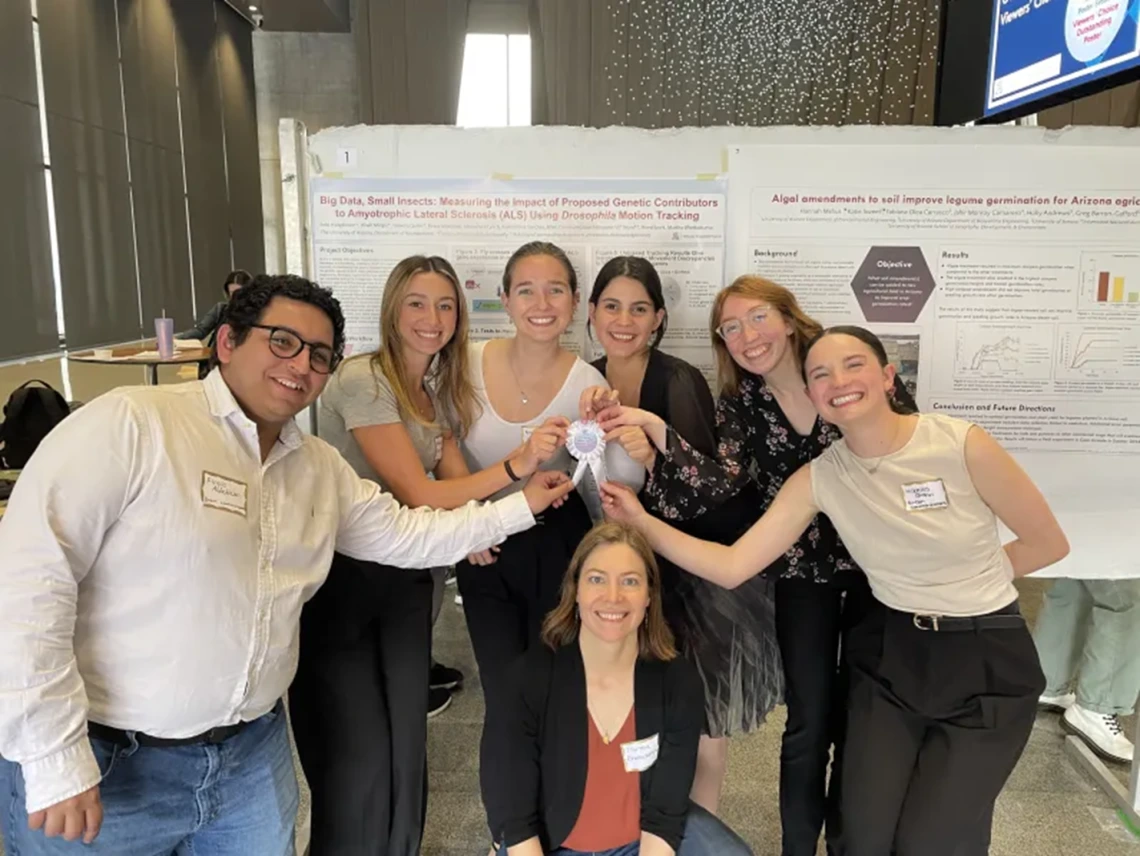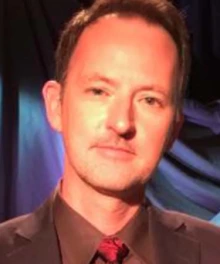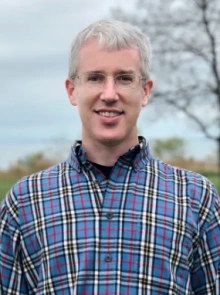Neuroscience launches new Undergraduate Research Program integrating fieldwork and data science

Researchers from the University of Arizona’s Department of Neuroscience have received support from the Provost’s Investment Fund to expand opportunities for undergraduate research in neuroscience.
In order to address what they saw as a critical shortage of neuroscience research opportunities for students, professors Martha Bhattacharya, Charles Higgins, and Melville Wohlgemuth are designing a new Course-based Undergraduate Research Experience that will allow students to participate in hands-on laboratory research alongside their academics.
“We are in the midst of creating a new undergraduate program in neuroscience, and as part of that program, we decided that every student should have a significant research experience,” Higgins said.

Dr. Martha R.C. Bhattacharya
While the team is still in the process of finalizing the design for the course, the research itself will involve the field collection of bat and bird vocalization data, and the hope is that students will gain experience in data collection and utilizing software to process and analyze the research data.
Bhattacharya has been a faculty member with neuroscience since 2017 and has taught her own similar research-based course since 2021.
“I started the class because I was getting a lot of emails from students wanting to do undergraduate research and I had no way I could support them,” Bhattacharya said.
This spurred Bhattacharya’s to create what became the first vertically integrated project course in the College of Science.
Bhattacharya’s research monitors motion in fruit flies, to track gene expression and development of the neurodegenerative disease ALS. Videos collected by students of genetically normal fruit flies, and flies that express genes responsible for ALS are analyzed to explore the neurodegeneration caused by the progression of ALS.
“We're using different genetic backgrounds that cause ALS, and we're comparing the earliest stages of motor dysfunction with the goal of trying to identify things that are common,” Bhattacharya said. “The goal is to try to test genes that have been predicted to be causally associated with ALS, and try to manipulate them in this genetic background, and monitor behaviors, to see if they actually matter to the disease progression.”
When the research course first began, students focused mostly on computational work, but Bhattacharya said the course design has continued to develop over the years to fit the needs of the students.
“The course itself has just evolved every semester, because students re-enroll. They continue some of the projects, and we tweak some of the projects,” she said. “Every time is different, and that's actually sort of fun for me. It's a lot of work, for sure, but it's definitely fun for me to be along with the students on the exploratory part of the project.”

Dr. Charles Higgins
Her program has proven so successful that it is the model for the new research based course that will be headed by Higgins and Wohlgemuth.
“The fact that Martha's already had a successful CURE course made us know that it was possible to make another,” Higgins said.
With their combined expertise, Higgins and Wohlgemuth believe the new program will provide students with important skills in computation and fieldwork that students can take with them into their future careers.
“Mel knows everything about bats, and I'm a computational person, so we're putting those two things together,” Higgins said.
To Wohlgemuth, part of the importance of research experiences like this is teaching students how to go through the process of data collection and analysis of large, complex data sets.
“That's something that we thought was lacking in the curriculum of our program, and something that we're hoping to contribute through this course,” Wohlgemuth said.
According to Higgins and Wohlgemuth, the concept for the course came from their curiosity about bat behavior and communication.
“I live near Sabino Canyon and most of the warm months, I'm watching the bats fly above me, and I can't hear what they're saying, but I know they're talking to each other,” Higgins said. “There's this amazing conversation that happens over your head that's all inaudible to us.”

Dr. Melville Wohlgemuth
The idea is to use electronic devices that can be attached to a tablet or smartphone, to translate the vocalizations down into audible frequencies so the researchers can finally hear what the bats are saying.
“I'm really fascinated to hear their vocalizations translated to figure out what is communication between individuals, versus echolocation,” Higgins said.
Higgins and Wohlgemuth said that much of the provost funding will go towards purchasing research software, as well as investing in field equipment that makes the program possible.
“As you can imagine, it is going to require a lot of hardware to do something like this,” Wohlgemuth said.
As for the team's next steps, Wohlgemuth said the next six months will be focused on setting up the research infrastructure for the program which they are planning to offer to students starting this fall.
“This is going to involve going out into the field and recording the sounds that animals are producing. So we need to figure out how to get the students out into the field, and where our field sites are going to be,” Wohlgemuth said.
For Wohlgemuth, one of the most important things he is hoping the students will learn is an appreciation for the scientific process in neuroscience.
“I want to give them a basic understanding of scientific literacy and the diverse contributions to science,” Wohlgemuth said.
“I think that there's a tremendous amount that they can learn,” Higgins agreed. “But the most interesting part is beyond the first semester. After the first time we teach it, I don't know what it's going to be, and that's the coolest part of this for me – getting to watch how it morphs over the years.”
As of right now, the new course will only be open to neuroscience students, however, the team said they hope one day it will be open to students in other disciplines to foster connections within the sciences.
“I think one of the real benefits of neuroscience on campus is that it's a very integrative science,” Wohlgemuth said. “Most of these labs have a variety of different scientists working in them, and I hope that in the future these CURE courses have the same culture that our labs do.”

